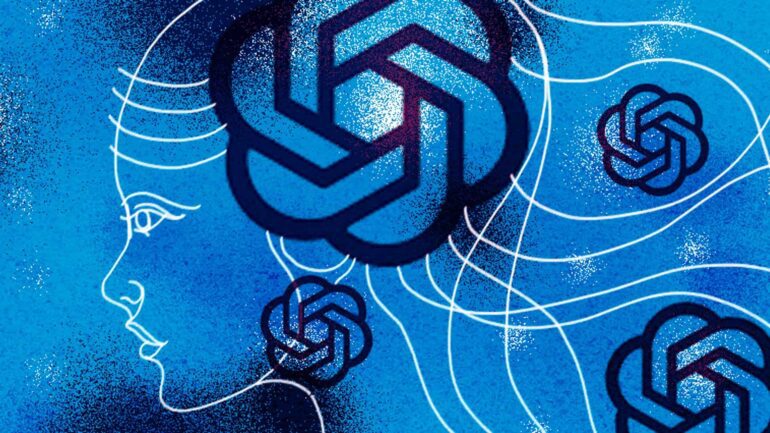TL;DR:
- OpenAI deliberates the release of an image detection tool designed to identify DALL-E 3-generated images.
- The tool’s accuracy is high but falls short of OpenAI’s quality standards.
- Concerns arise over releasing an unreliable tool that could impact image interpretation.
- OpenAI aims for exceptional accuracy, with indications of a potential 100% target.
- The tool maintains over 95% accuracy even with common image modifications.
- The previous controversy involving OpenAI’s text classifier tool adds to hesitation.
- OpenAI grapples with defining AI-generated images, seeking input from artists.
- Other organizations explore watermarking and detection techniques for generative media.
- The lack of industry standardization remains a challenge.
- OpenAI focuses on DALL-E 3-specific solutions but leaves the door open for a general detector.
Main AI News:
OpenAI, the trailblazing organization in the field of AI, is grappling with a crucial decision – when to unveil its revolutionary image detection tool. This tool is designed to discern whether an image has been created using DALL-E 3, OpenAI’s pioneering generative AI art model. Sandhini Agarwal, a dedicated OpenAI researcher focused on safety and policy, delved into the matter during an exclusive interview with TechCrunch this week. According to her, although the tool boasts impressive accuracy, it has yet to meet OpenAI’s stringent quality standards.
The pressing issue at hand revolves around the release of a potentially unreliable tool. The tool, if made accessible prematurely, could wield significant influence over the perception of images. It could determine whether a piece of art is accredited to a human artist or branded as inauthentic and misleading. Agarwal stated, “There’s a question of releasing a tool that’s somewhat unreliable, given that its decisions could profoundly impact the interpretation of photos.”
OpenAI’s target for accuracy with this tool appears exceedingly high. Mira Murati, OpenAI’s Chief Technology Officer, declared during The Wall Street Journal’s Tech Live conference that the classifier demonstrates a staggering “99%” reliability in identifying unaltered photos generated by DALL-E 3. Whether the ultimate aim is 100% accuracy remains undisclosed, as Agarwal remained tight-lipped on the matter.
A draft OpenAI blog post shared with TechCrunch disclosed a fascinating nugget of information: “[The classifier] maintains over 95% accuracy even when an image has undergone common types of modifications, such as cropping, resizing, JPEG compression, or when text or cutouts from real images are superimposed onto small sections of the generated image.”
OpenAI’s hesitancy in releasing the tool may partly stem from the controversy surrounding its earlier public classifier tool. This previous tool was designed to detect AI-generated text not only from OpenAI’s models but also from text-generating models offered by third-party vendors. However, OpenAI had to retract the AI-written text detector due to its “low rate of accuracy,” a decision that garnered widespread criticism.
Agarwal suggests that OpenAI is also grappling with the philosophical question of what defines an AI-generated image. While artwork created entirely from scratch by DALL-E 3 is undoubtedly AI-generated, the line blurs when considering images that have undergone multiple rounds of edits, combined with other images, and subjected to various post-processing filters. Agarwal poses the question, “Should an image, at that point, be classified as AI-generated or not?” OpenAI is actively seeking input from artists and individuals who would be significantly impacted by the introduction of such a classifier tool.
The quest for solutions to the challenges posed by AI-generated deepfakes extends beyond OpenAI. Various organizations are exploring watermarking and detection techniques to tackle the proliferation of generative media. DeepMind, for instance, has proposed SynthID, a specification to mark AI-generated images in an imperceptible manner to the human eye while remaining detectable by specialized detectors. French startup Imatag, established in 2020, offers a watermarking tool claiming resilience to resizing, cropping, editing, or image compression, similar to SynthID. Another firm, Steg.AI, employs an AI model to apply watermarks that withstand resizing and other edits.
However, a critical challenge remains: the industry has yet to converge on a standardized watermarking or detection method. Even if consensus is reached, there is no assurance that these watermarks and the accompanying detectors will be impervious to circumvention.
Agarwal sheds light on OpenAI’s rationale for focusing primarily on DALL-E 3-specific solutions, stating, “[The classifier] being DALL-E 3-specific is a technically more manageable problem.” However, she does not rule out the possibility of developing a general detector in the future, emphasizing that the path OpenAI chooses to take depends on the evolution of the classifier tool.
Conclusion:
OpenAI’s cautious approach to releasing its image detection tool reflects the organization’s commitment to maintaining high standards and ethical considerations in the face of AI-generated content proliferation. The absence of industry-wide standards underscores the evolving challenges in this space, presenting both opportunities and risks for the market. Companies must stay vigilant and adaptive to navigate this complex landscape effectively.

